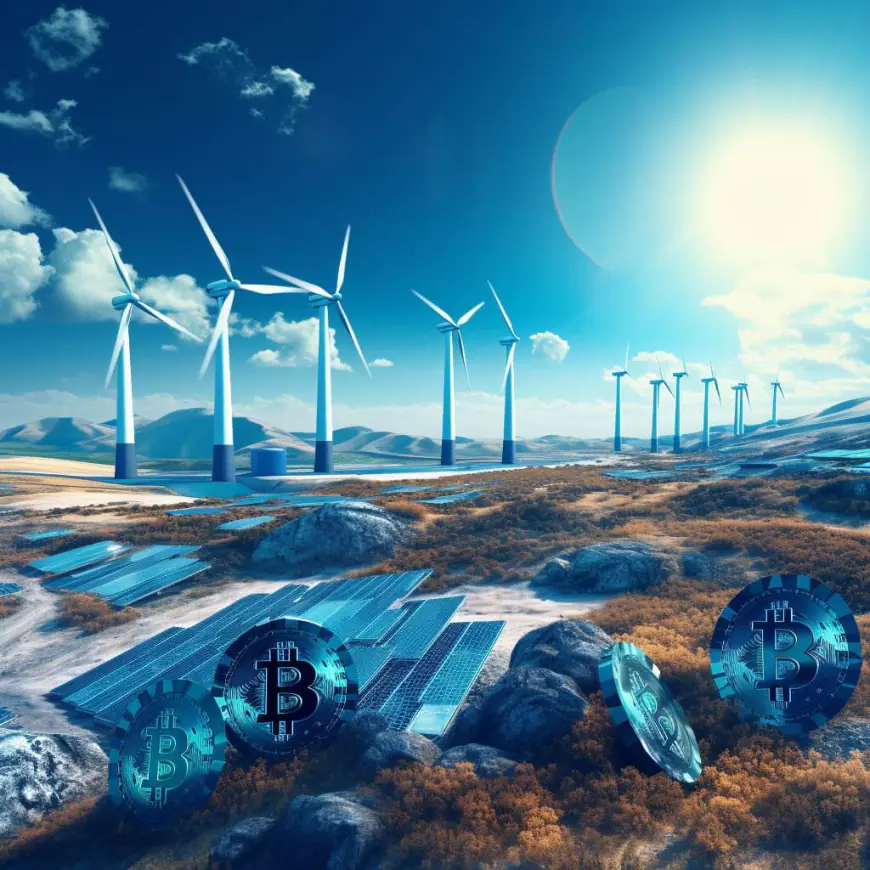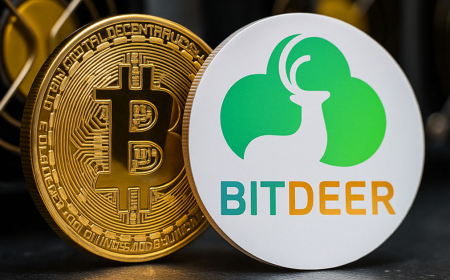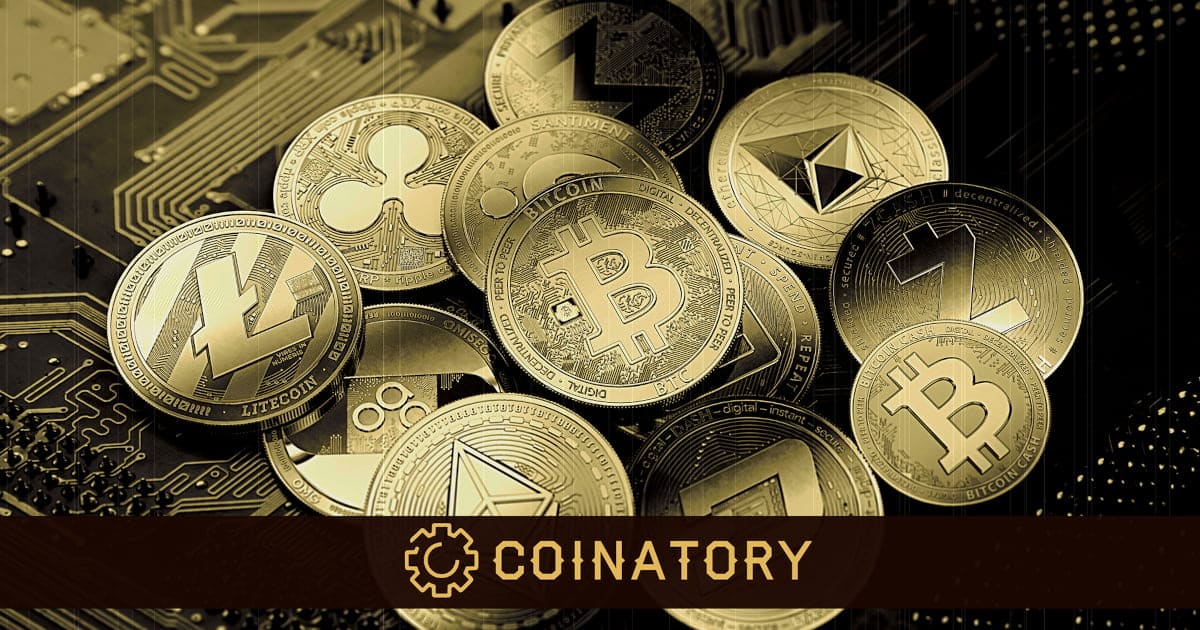Using Wind Energy to Mine Cryptocurrencies
Wind turbines harness the force of the wind to generate electricity for homes and businesses. These turbines can operate independently, catering to a single or a few establishments, or they can be grouped together in what is known as a wind farm. This article sheds light on their functionality and their significance in shaping the […]

Wind turbines harness the force of the wind to generate electricity for homes and businesses. These turbines can operate independently, catering to a single or a few establishments, or they can be grouped together in what is known as a wind farm. This article sheds light on their functionality and their significance in shaping the energy landscape of the future.
Modern wind turbines are an evolved form of traditional windmills. Their primary function is to transform wind energy into electrical power. While the large turbines are often the most noticeable, there are also smaller variants available. These compact turbines are designed for specific purposes, such as powering a recreational vehicle or a boat.
A wind farm is essentially a collection of wind turbines. It’s remarkable to consider that many daily activities, like charging mobile devices, brewing coffee, or powering electric cars, could be fueled by electricity originating from a mere gust of wind.
When observing a wind farm, the most prominent features are the tall turbines, often painted in white or light gray. Each turbine is equipped with blades, an adjoining box known as a nacelle, and a shaft. Even a mild breeze can set the blades in motion, generating kinetic energy. As the blades spin, they cause the shaft inside the nacelle to rotate. Within the nacelle, a generator takes over, converting the kinetic energy into usable electrical power.
Why is the crypto industry in need of wind farms?
By the end of 2017, the energy consumption associated with Bitcoin started drawing significant attention. Bitcoin’s annual electricity usage stood at an astounding 91 terawatt-hours, leading experts to speculate that Bitcoin mining could potentially increase global temperatures by 2°C. Such figures quickly earned Bitcoin the label of an ‘environmentally unfriendly’ currency.
Regrettably, the energy consumption of Bitcoin only intensified, doubling its initial figures and sparking concerns, leading to restrictions for several miners. So, what makes cryptocurrencies such heavy electricity consumers?
Bitcoin, along with many other digital currencies, relies on the proof-of-work consensus model. This model demands a high-energy process to both validate transactions and generate new coins. It’s crucial to understand that the act of mining isn’t inherently harmful to the environment. The real concern is the type of energy source fueling the mining operations.
Beyond the sheer electricity usage, cryptocurrency mining was reported to generate approximately 30.7 kilotons of electronic waste each year. Given these significant environmental impacts, the call for more eco-friendly cryptocurrency solutions became evident.
Utilizing Wind Energy for Cryptocurrency Mining
Assess Your Energy Needs
Before embarking on the journey of integrating wind energy into your cryptocurrency mining operations, it’s imperative to have a clear understanding of your energy requirements. This assessment lays the foundation for the entire setup and ensures efficiency and cost-effectiveness.
Location Analysis
The geographical location of your mining setup plays a pivotal role in determining the feasibility of using wind energy. Some regions experience consistent and strong wind flows, making them ideal for wind turbine installations. It’s essential to choose a location where wind patterns are favorable for most parts of the year.
Wind Speed and Temperature
Wind speed directly influences the amount of energy a turbine can generate. Areas with consistent high-speed winds are more suitable for wind energy harvesting. Additionally, ambient temperature can affect air density, which in turn can influence wind strength. Understanding these nuances helps in making informed decisions about the type and number of turbines required.
Energy Consumption of Mining Rigs
Different mining rigs have varying energy consumptions. It’s crucial to calculate the cumulative energy requirement of all the rigs you intend to run. This will give you a ballpark figure of the amount of energy you need to generate.
Turbine Efficiency
Not all wind turbines are created equal. Depending on their design and efficiency, turbines can convert varying percentages of wind energy into electrical energy. Familiarizing yourself with the efficiency ratings of available turbines will help in estimating how many you might need.
Cost Implications
Once you have a clear picture of your energy needs and the potential energy output from the turbines, you can create a budget. This budget should account for the purchase of turbines, installation costs, maintenance, and any other associated expenses.
Installing turbines
Harnessing wind energy for cryptocurrency mining necessitates a two-fold approach: setting up the wind turbines and integrating a robust battery system.
Here’s a detailed breakdown of this process:
Turbine Selection
- Type: As previously mentioned, turbines come in two primary designs: horizontal-axis and vertical-axis. While horizontal-axis turbines are more common due to their efficiency, the choice should be based on the specific conditions and requirements of the location.
- Size and Capacity: Depending on the energy needs assessed, choose turbines of appropriate size and capacity. Larger turbines generally produce more power but also require more space and investment.
Site Preparation
- Ground Assessment: Before installation, it’s essential to evaluate the ground conditions. This ensures the turbines are anchored securely and can withstand various weather conditions.
- Accessibility: Ensure the site is easily accessible for maintenance, repairs, and monitoring.
Turbine Installation
- Assembling: Follow the manufacturer’s guidelines to assemble the turbine components. This often includes attaching blades to the rotor and setting up the nacelle.
- Mounting: Secure the assembled turbine on a tower. The height of the tower is crucial as wind speeds increase with altitude, leading to higher energy generation.
- Electrical Setup: Establish the necessary electrical connections, ensuring they are insulated and protected from environmental factors.
Integrate the batteries with Mining Equipment
Understanding Power Conversion
- AC and DC: Wind turbines typically generate alternating current (AC). However, battery storage systems often store energy in the form of direct current (DC). Understanding this distinction is vital for the integration process.
- Inverters: These devices play a pivotal role in converting the DC from the batteries back into AC, ensuring the power is compatible with most mining rigs and the grid.
Setting Up the Electrical Infrastructure
- Wiring: Establish a robust and insulated wiring system that connects the battery storage to the mining equipment. Ensure that the wiring can handle the load and is protected against environmental factors.
- Circuit Breakers and Safety: Incorporate circuit breakers to prevent any electrical overloads or short circuits. This not only protects the mining equipment but also ensures the safety of the entire setup.
Synchronization
- Phase Matching: Ensure that the electrical phase from the battery system matches that of the mining rigs. This synchronization is crucial for the efficient functioning of the equipment.
- Frequency Alignment: The frequency of the AC power should align with the requirements of the mining equipment. Any discrepancies can lead to inefficiencies or potential damage.
Monitoring and Management Systems
- Energy Management Systems (EMS): Implement an EMS to monitor the flow of electricity from the batteries to the mining rigs. This system can provide real-time data, helping in optimizing energy usage and identifying potential issues.
- Battery Health Monitoring: Regularly check the state of the batteries, ensuring they are discharging and recharging efficiently. Over time, batteries can degrade, so it’s essential to monitor their health and replace them when necessary.
Backup Systems
- Redundancy: Consider setting up a secondary battery system or an alternative power source. This ensures continuous mining operations even if the primary battery system encounters issues.
- Automatic Switching: Implement systems that can automatically switch to backup power sources in case of primary system failures.
Regular Maintenance
- Routine Checks: Periodically inspect the entire integration setup, from batteries to mining rigs. This helps in early detection of potential issues and ensures smooth operations.
- Software Updates: If your integration involves software-based management systems, ensure they are regularly updated to benefit from the latest features and security patches.
Advantages and Disadvantages of Using Wind Energy for Cryptocurrency Mining
Using wind energy for cryptocurrency mining, particularly Bitcoin, presents a set of advantages and challenges. As the world leans towards sustainable energy solutions, it’s essential to weigh the pros and cons of this approach.
Advantages
Eco-friendly: Wind energy is a renewable source, meaning it doesn’t deplete over time. Moreover, it doesn’t emit greenhouse gasses, making it a clean and environmentally-friendly option.
Cost-Efficient in the Long Run: While there might be initial setup costs, wind energy proves to be cost-effective over time. The operational costs are relatively low, and maintenance is minimal compared to other energy sources.
No Recurring Energy Bills: Once the wind turbines are up and running, miners can potentially eliminate their dependence on traditional power grids. This independence from utility companies can lead to significant savings, enhancing the profitability of mining operations.
Reliability: Modern wind turbines are engineered to withstand various weather conditions. Whether it’s a gentle breeze or a raging storm, these turbines can capture wind energy efficiently.
Scalability: Wind energy is versatile. It can be harnessed for small-scale mining operations, like those run by individual enthusiasts, or large-scale commercial mining farms.
Disadvantages
High Initial Investment: Setting up wind turbines requires a substantial upfront cost. This financial barrier can deter small-scale miners or those just starting in the cryptocurrency domain.
Dependence on Wind Patterns: The effectiveness of wind energy is directly tied to wind patterns. Regions with erratic or low wind speeds might not be ideal for this energy source.
Geographical Limitations: Wind energy is most effective in open areas where wind flow isn’t obstructed by tall buildings or dense forests. This limitation can restrict where mining operations powered by wind energy can be set up.
Inconsistency: Wind isn’t always consistent. There might be days with minimal wind, affecting the energy output. This inconsistency necessitates backup energy solutions or storage systems to ensure uninterrupted mining.
Conclusion
Using wind energy for cryptocurrency mining offers a greener alternative in the digital currency world. While it brings many benefits, there are challenges to consider. As we move towards eco-friendly solutions, combining wind energy with crypto mining could be a significant step forward for a sustainable digital future.
Embracing this synergy not only addresses environmental concerns but also showcases the adaptability and forward-thinking nature of the cryptocurrency industry. As technology and sustainability converge, wind-powered crypto mining might just become the new norm.
What's Your Reaction?




































































































